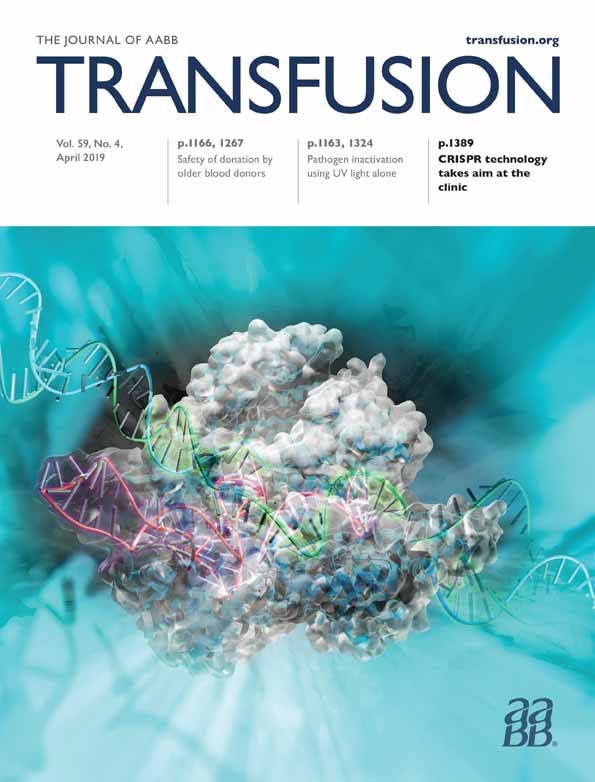Bacterial inactivation of platelet concentrates with the THERAFLEX UV-Platelets pathogen inactivation system
Abstract
BACKGROUND
The THERAFLEX UV-Platelets system (Maco Pharma) uses ultraviolet C (UVC) light for pathogen inactivation (PI) of platelet concentrates (PCs) without any additional photoactive compound. The aim of the study was to systematically investigate bacterial inactivation with this system under conditions of intended use.
STUDY DESIGN AND METHODS
The robustness of the system was evaluated by assessing its capacity to inactivate high concentrations of different bacterial species in accordance with World Health Organization guidelines. The optimal use of the PI system was explored in time-to-treatment experiments by testing its ability to sterilize PCs contaminated with low levels of bacteria on the day of manufacture (target concentration, 100 colony-forming units/unit). The bacteria panel used for spiking experiments in this study included the World Health Organization International Repository Platelet Transfusion Relevant Reference Strains (n = 14), commercially available strains (n = 13), and in-house clinical isolates (n = 2).
RESULTS
Mean log reduction factors after UVC treatment ranged from 3.1 to 7.5 and varied between different strains of the same species. All PCs (n = 12/species) spiked with up to 200 colony-forming units/bag remained sterile until the end of storage when UVC treated 6 hours after spiking. UVC treatment 8 hours after spiking resulted in single breakthrough contaminations with the fast-growing species Escherichia coli and Streptococcus pyogenes.
CONCLUSION
The UVC-based THERAFLEX UV-Platelets system efficiently inactivates transfusion-relevant bacterial species in PCs. The comprehensive data from this study may provide a valuable basis for the optimal use of this UVC-based PI system.
CONFLICT OF INTEREST
UG, WH, THM, and AS received grants from the Research Foundation of the German Red Cross Blood Services (Deutsche Forschungsgemeinschaft der Blutspendedienste des Deutschen Roten Kreuzes) and Macopharma for the development of the UVC-based PI technology for platelets.




